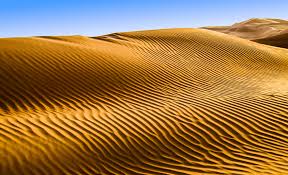Imagine a giant park in the Thar Desert, in India’s Rajasthan state. That’s the Desert National Park si also known as thar ka Registan ( थार रेगिस्तान ) , one of India’s biggest! It’s almost as big as 3,162 football fields put together. This park is like a special museum showing off the Thar Desert’s unique ecosystem.
Think sand dunes – they cover almost half the park! But there’s more to see than just sand. There are also rocky hills, salty plains, and areas with plants and animals in between. This park was officially protected in 1980 to keep the desert safe.
So, if you ever want to see a real-life desert up close, the Desert National Park is the place to go!
Imagine a vast ocean of sand, shimmering golden under the hot sun. That’s the Thar Desert, a special place in India that’s home to unique wildlife and plants adapted to survive in the harsh conditions. ️
The Indian government wanted to protect this special ecosystem, so in 1980 they created the Desert National Park. It’s like a giant nature reserve, covering a whopping 3162 square kilometers – that’s almost as big as 3,162 football fields put together!
Because it’s a National Park, the Desert National Park is strictly protected, ensuring that the beauty and diversity of the Thar Desert will be preserved for future generations.
Also read about Ranthambore National Park.
Also read about Sariska National Park.
Also read about keoladeo National Park, Mukundra National Park.
Location
Desert National Park is a national park situated in the Indian state of Rajasthan, near the towns of Jaisalmer and Barmer.
Animals :
Chinkara or Indian Gazelle:
These graceful antelopes with big eyes are common sights in the park, often seen grazing on the sparse vegetation.
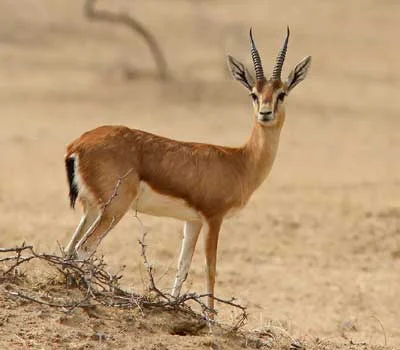
Desert fox:
These clever foxes with big ears and bushy tails are well-adapted to the harsh desert environment. They hunt small animals and insects.
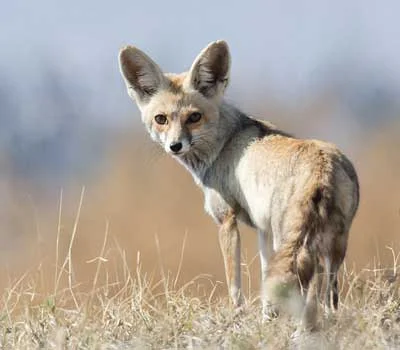
Desert wolf: These shy wolves live in packs and hunt larger prey like deer and antelope. They are rarely seen by humans.
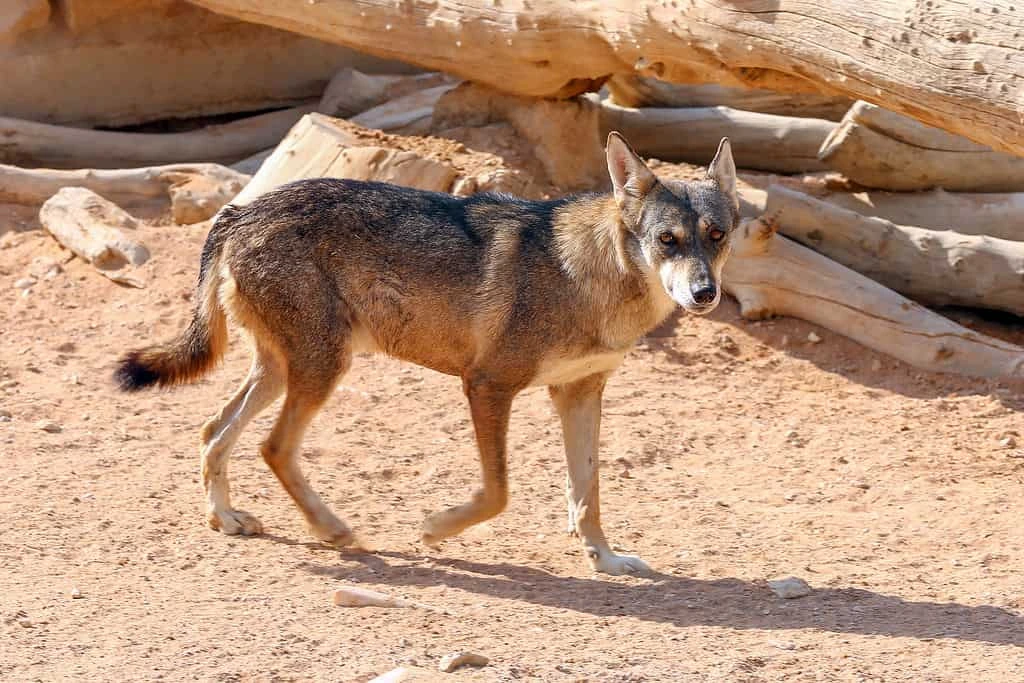
Desert cat:
These small cats are similar to domestic cats, but with longer legs and ears. They are excellent hunters and nocturnal.
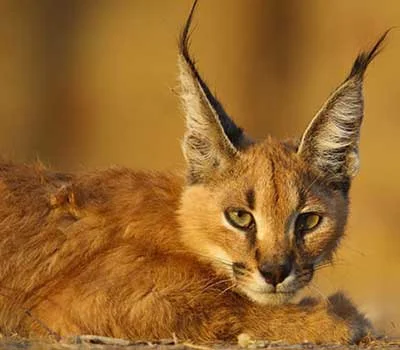
Birds of the Desert National Park:
Sandgrouse, partridges, bee-eaters, larks, and shrikes:
These colorful birds are well-suited to the desert environment. They eat insects and seeds, and some even build their nests in the sand.
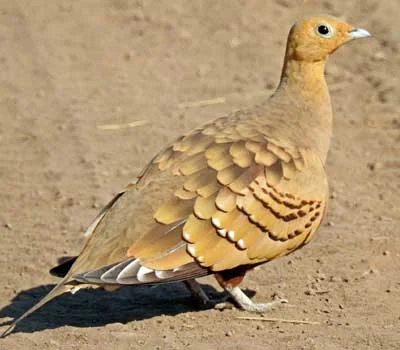
Demoiselle crane and MacQueen’s bustard:
These larger birds migrate to the park in winter. Demoiselle cranes are known for their graceful dances, while MacQueen’s bustards are large ground birds with impressive wingspans.
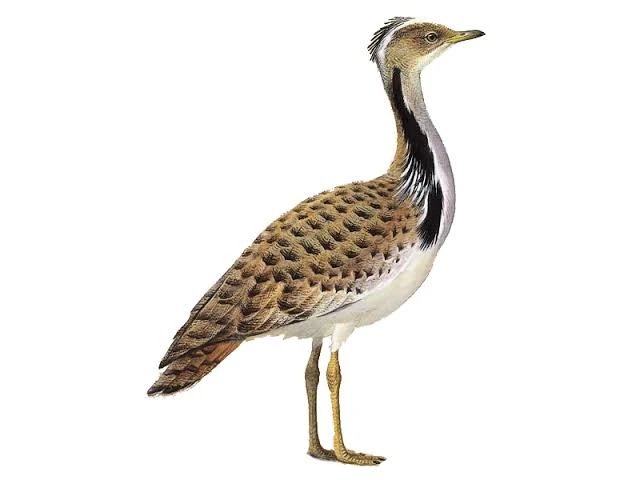
Great Indian bustard:
This critically endangered bird is the star attraction of the park. It is one of the largest flying birds in the world and is found only in India. The Desert National Park is one of the last places where it can be seen in good numbers.
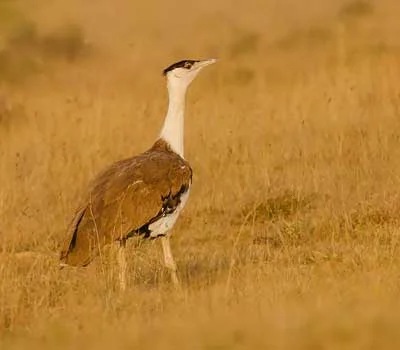
The Thar Desert:
The Thar Desert is a vast area of sand dunes in western India. It is often called an “ocean of sand.”
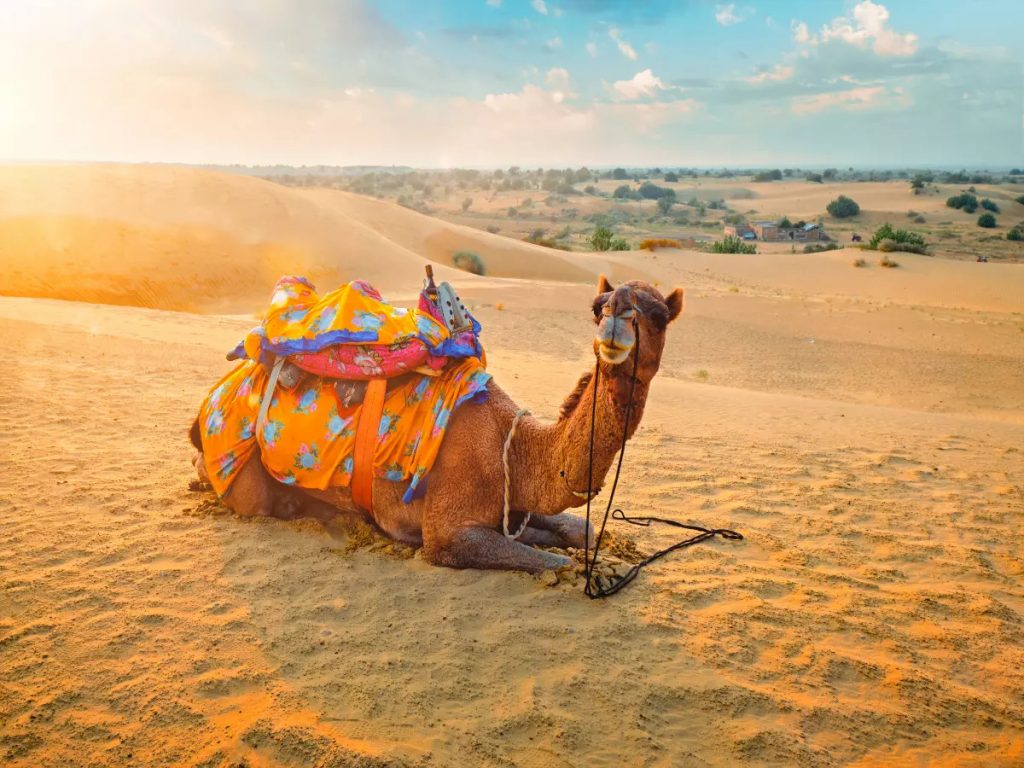
The desert is a fragile ecosystem, but it supports a variety of unique wildlife.
The Desert National Park is a great place to see the Thar Desert’s ecosystem up close.
Flora
Open grasslands: These grassy plains, dotted with shrubs and wildflowers, are perfect for grazing animals like the Chinkara antelope.
Desert National Park grassland
Thorny bushes: These tough plants, like the Aak shrub, provide shelter for small animals and birds. They also help prevent soil erosion in the windy desert.
Desert National Park thorny bushes
Dunes: Rolling sand dunes, sculpted by the wind, cover almost half the park! They’re fun to explore but can be tricky to navigate. ️
Desert National Park sand dunes
Even though the desert might seem harsh, there are actually over 168 different plant species living in the park! Some of the interesting trees you might find include:
Tecomella undulata: This beautiful tree has yellow trumpet-shaped flowers that bloom in the spring.
Moringa concanensis: Also known as the drumstick tree, its leaves and pods are used in traditional Indian medicine.
Helitropium rariflorum: These tiny purple flowers look like they’re turning towards the sun, hence their name “heliotrope”. ☀️
Ammanie desertorum: This delicate pink flower thrives in wet, sandy areas like temporary ponds.
So, next time you imagine a desert, remember it’s not just all sand! The Desert National Park shows us how even in harsh environments, life finds a way to thrive and create diverse and beautiful ecosystems.
Planning your Desert National Park Adventure: Costs and Times
Here’s a quick rundown of what you need to know about visiting the Desert National Park:
Tickets:
For Indians, entry is just INR 100, while foreigners pay INR 300.
Want to explore by jeep? Safaris typically cost around INR 100.
Fancy a camel ride? Prices vary, so be sure to ask beforehand.
Opening Hours:
The park is open year-round, from 10 am to 5 pm.
Best Time to Visit:
Escape the scorching heat and enjoy pleasant weather by visiting between November and March.
Bonus Tip: Consider joining a guided tour to learn more about the park’s amazing wildlife and landscapes!
I hope this makes it easier to understand the information about visiting the Desert National Park! Have a fantastic adventure!
Things to do in Desert National Park
Spice up your Desert National Park trip with the Jaisalmer Desert Festival!
This incredible event isn’t just about stunning scenery, it’s a chance to dive into the vibrant culture of Rajasthan.
Imagine thrilling camel races, colorful folk dances and music filling the air, and amazing displays of traditional art and crafts.
It’s like stepping into a storybook where the desert comes alive with laughter, music, and the rich heritage of Rajasthan.
So, if you’re looking for an experience beyond just exploring the dunes, don’t miss the Jaisalmer Desert Festival during your Desert National Park visit!
I hope this makes it more exciting and enticing to consider the festival!
How to Reach Desert National Park
Getting to the Desert National Park, nestled amidst the vast Thar Desert, might seem like a daunting task. But fear not, adventurer, for there are multiple paths leading to this mesmerizing oasis!
- By Air: For the swiftest journey, Jodhpur Airport, roughly 300 km away, welcomes you with open arms. Taxis whisking you directly to the park await your arrival.
- By Train: The convenient Jaisalmer train station, a mere 30 km from the park, is connected to major cities across India. Hop on a train, soak in the scenery, and arrive refreshed for your desert escapade.
- By Bus: Budget-conscious travelers rejoice! Several bus companies offer daily trips from nearby cities, making the park accessible and affordable.
- Road Trip: Craving an adventure? Rent a car from Jaisalmer or bring your own trusty steed. Wind your way through scenic routes and lose yourself in the desert’s vastness.
Remember, the Thar Desert unique location amidst to its charm. So, embrace the journey, choose your mode of transport, and get ready for an unforgettable experience in the heart of the desert!
